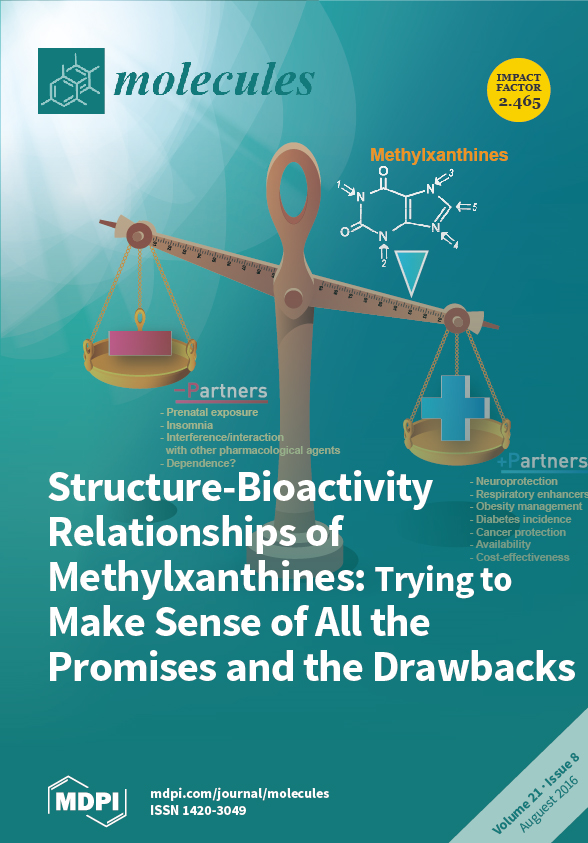High-speed counter-current chromatography (HSCCC) has been successfully used for the separation of eight compounds from
Chimonanthus praecox flowers. Firstly, the crude extract of
Chimonanthus praecox flowers was dissolved in a two-phase solvent system composed of petroleum ether–ethyl acetate–methanol–H
2O (5:5:3:7,
v/v) and divided into two parts: the upper phase (part I) and the lower phase (part II). Then, HSCCC was applied to separate the phenolic acids from part I and part II, respectively. Considering the broad polarity range of target compounds in part I, a stepwise elution mode was established. Two optimal solvent systems of petroleum ether–ethyl acetate–methanol–H
2O–formic acid (FA) (5:5:3:7:0.02, 5:5:4.3:5.7:0.02,
v/
v) were employed in this separation. Five phenylpropanoids and two flavonoids were successfully separated from 280 mg of part I, including 8.7 mg of 3,4-dihydroxy benzoic acid (
a, 95.3% purity), 10.9 mg of protocatechualdehyde (
b, 96.8% purity), 11.3 mg of
p-coumaric acid (
c, 98.9% purity), 12.2 mg of
p-hydroxybenzaldehyde (
d, 95.9% purity), 24.7 mg of quercetin (
e, 97.3% purity), 33.8 mg of kaempferol (
f, 96.8% purity), and 24.6 mg of 4-hydroxylcinnamic aldehyde (
g, 98.0% purity). From 300 mg of part II, 65.7 mg of rutin (
h, 98.2% purity), 7.5 mg of 3,4-dihydroxy benzoic acid (
a, 77.4% purity), and 4.7 mg of protocatechualdehyde (
b, 81.6% purity) were obtained using the solvent system EtOAc–
n-butanol (
n-BuOH)–FA–H
2O (4:1:0.5:5,
v/
v). The structures of the eight pure compounds were confirmed by electrospray ionization-mass spectrometry (ESI-MS),
1H-NMR and
13C-NMR. To the best of our knowledge, compounds
a–
d and
f were the first separated and reported from the
Chimonanthus praecox flower extract.
Full article






